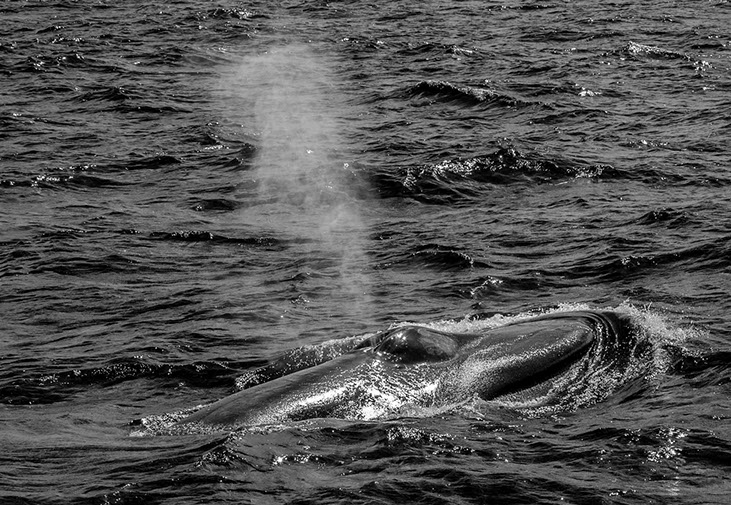
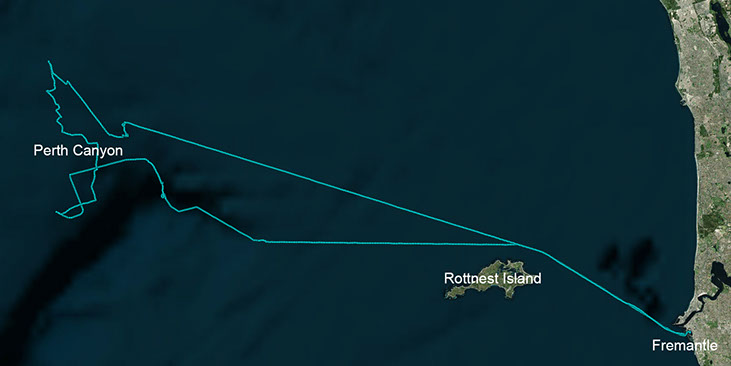
GPS Tracks - Chasing Pygmy Blues
In our first trip to the canyon, Curt suggested we run out ahead as they were going to have a delayed start. He gave us some coordinates and we headed off in our 6.3 metre rigid inflatable with grand ambitions of finding our own pygmy blues.
When we reached our location, land had completely disappeared from sight and we spent fruitless hours hunting the elusive blues. It was now about 20 minutes to sundown, the wind was kicking up a little and there was no sight of WhaleSong II.
10 minutes later WhaleSong II hove into sight and we fruitlessly searched until the light gave out completely. We had the luxury of a tow back to Rottnest Island.
Curt and Mich reminded us that when they did their pioneering research, it was in a smaller inflatable than ours and they travelled out and back to the canyon daily from Rottnest Island. Those who ply these waters know that is no small feat.

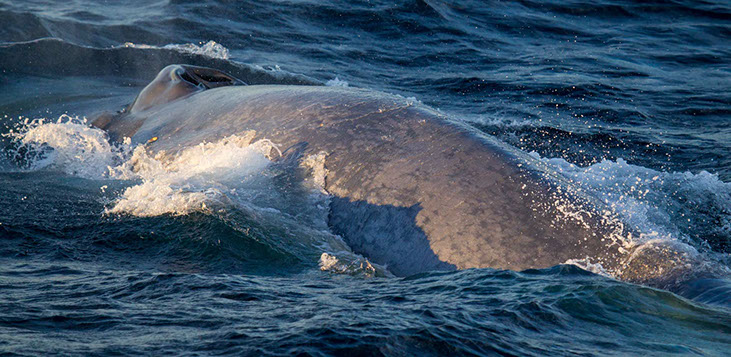

A Pygmy Blue Sounding - Perth Canyon
The majestic sight of an solitary ocean giant preparing to dive. The canyon lies 37-50NM off the Western Australian coast and acts as a concentrator for krill, (Euphasia recurva). This food source attracts the pygmy blues during the summer and autumn months.
The whales feed at depths of 300-500 metres. Dive times are around 8 to 15 minutes. Surface times are 2-3 minutes when feeding with 3-25 blows.
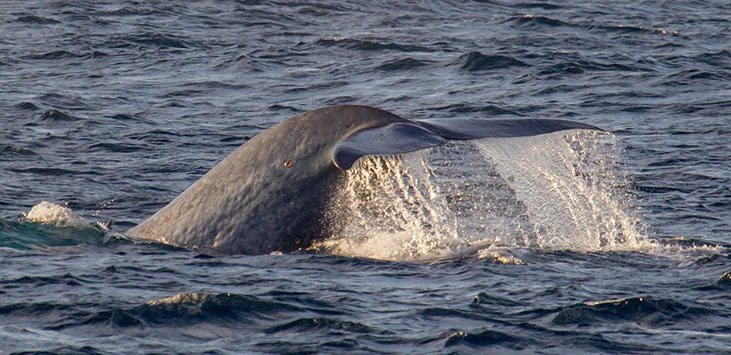
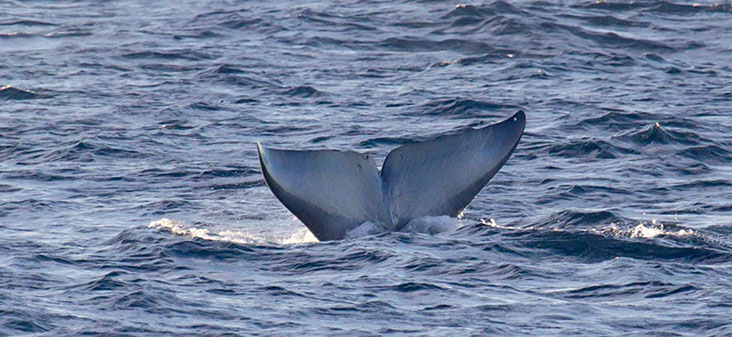
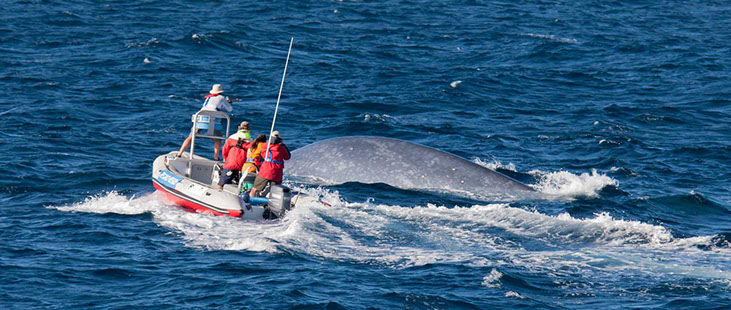
Preparing to Satellite Tag a Pygmy Blue - Perth Canyon
A team from WhaleSong II about to satellite tag a pygmy blue whale. Information from satellite tagging provides vital information about migration routes and feeding grounds. Some of these whales have been tracked through to the Banda Sea in Indonesia.
Link to Australian Antarctic Research Division news on the results of satellite tracking:
http://www.antarctica.gov.au/news/2014/mapping-the-migratory-route-of-pygmy-blue-whales
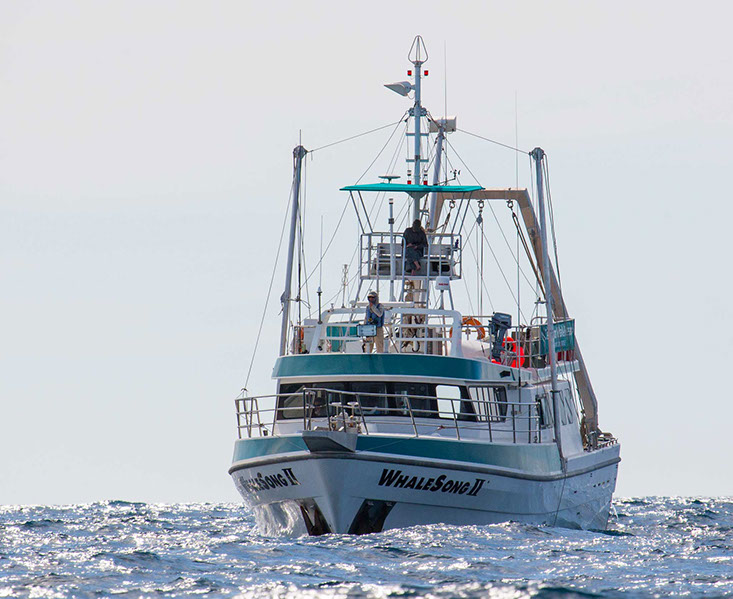
WhaleSong II 'Hunting' Pygmy Blues in the Perth Canyon
Curt and Micheline replaced WhaleSong II with a new purpose designed research vessel, Whale Song in 2011.